From early 2020 onwards I have been documenting young local farmers who, amongst other duties, maintain the sheep at Campbell Park in Milton Keynes. Tim, Arthur and Connor have worked in farming since early age. It is this definitive aspect of their lives which drives me to photograph their unique experiences.
During late February of 2021 the sheep were to be round up and vaccinated. Soon enough I kindly received a message from Tim stating that he was enroute. I didn’t have long to prepare and quickly made my way down. I try my best to engage with all communities. As per my practice of hyperlocal documentary photography, I want to show that it is possible to create interesting and meaningful work with minimal budget and equipment.
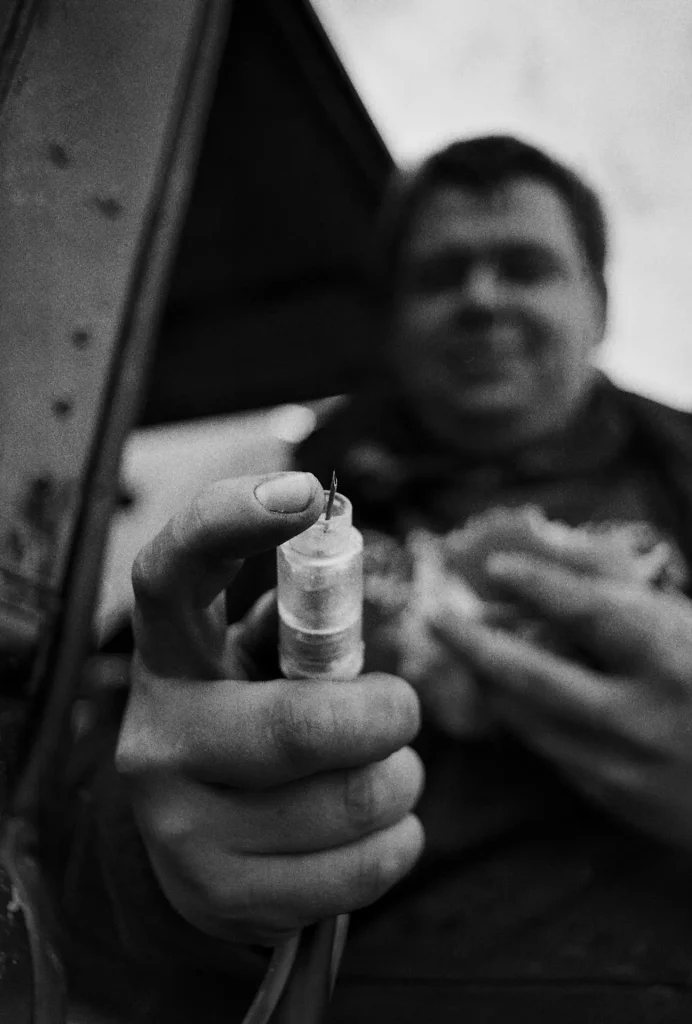
As with many situations like this, my thought process is simple. Make sure my equipment is in order and arrive early. Stay present, listen, ask questions and have a spare roll ready in my pocket. Anticipate the next moment and where I need to be. Help out when I’m able to stop shooting, and have a laugh afterwards. Access and rapport comes with: research, preparation, time, respect and the humility to learn from failure or rejection.
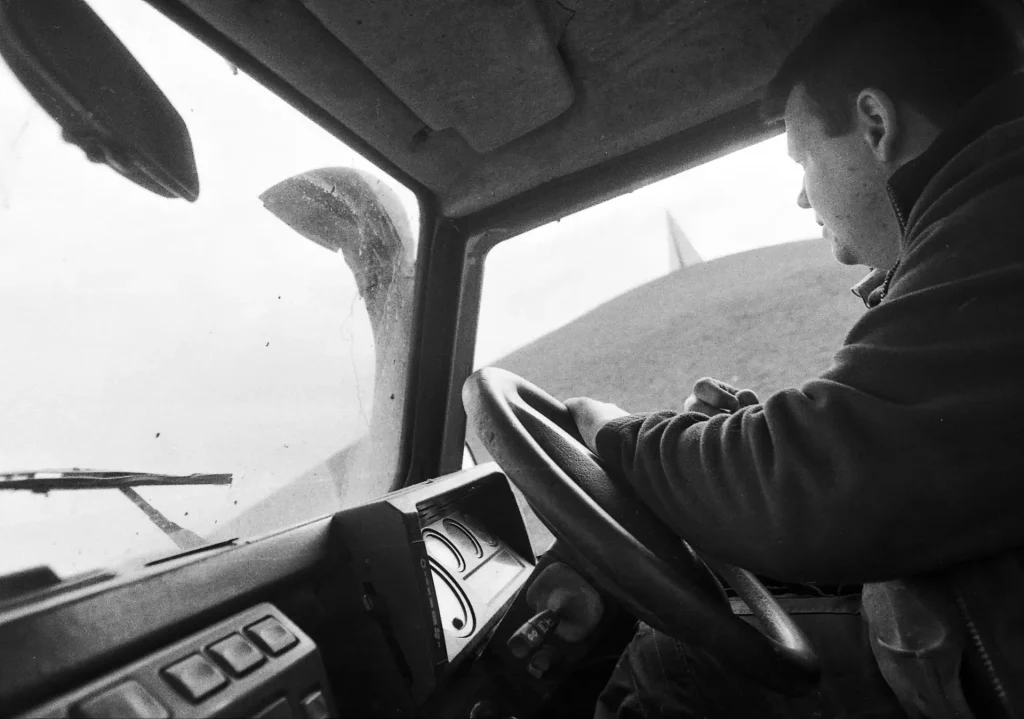
It is important to grasp a sense of the people you’re going to be spending significant time with. Understand their hopes, fears, dreams, aspirations, irritations. This process is complex and ongoing. I am investigating what it means to be a young farmer on the edge of town in 2021 and beyond. Reflecting on ideas of identity, age, class, masculinity and mental health.
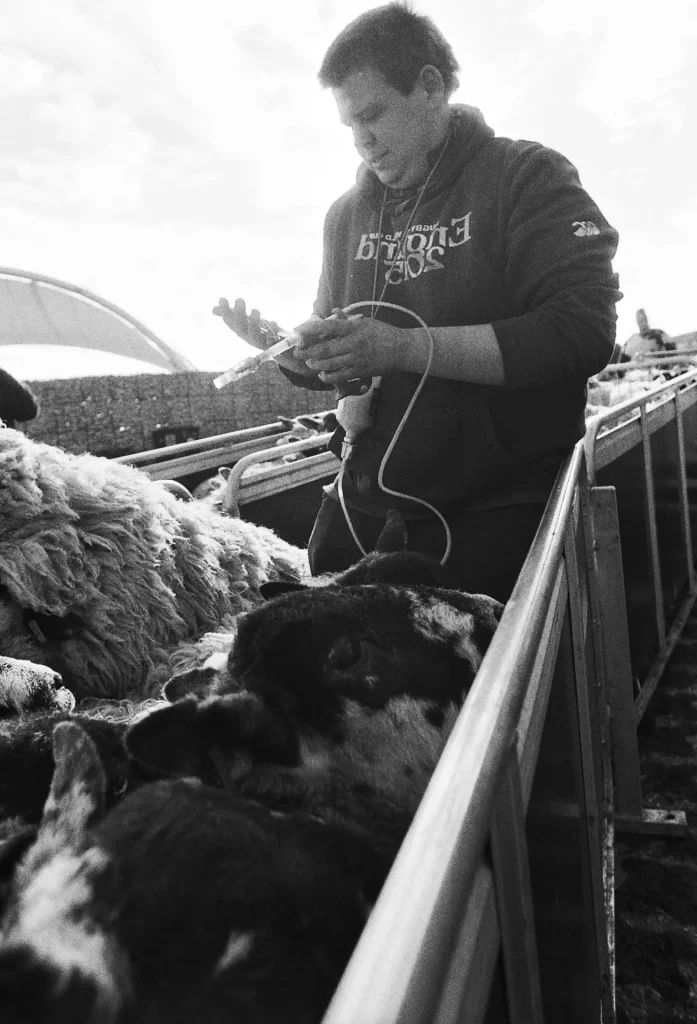
Introductions and first impressions go a long way. A public notice caught my attention stating that sheep were arriving on a certain day. Having seen iconic images of the same situation from Milton Keynes’ early photographic archive, it was imperative to go. Unfortunately the arrival time was not given, so I waited approximately 6 hours at a high vantage point in the rain. I then saw the tractor arriving and made my way down. With a small introduction I just got on with it. Speaking with them whilst shooting, exchanging contacts and sharing the images. The relationship develops from there.
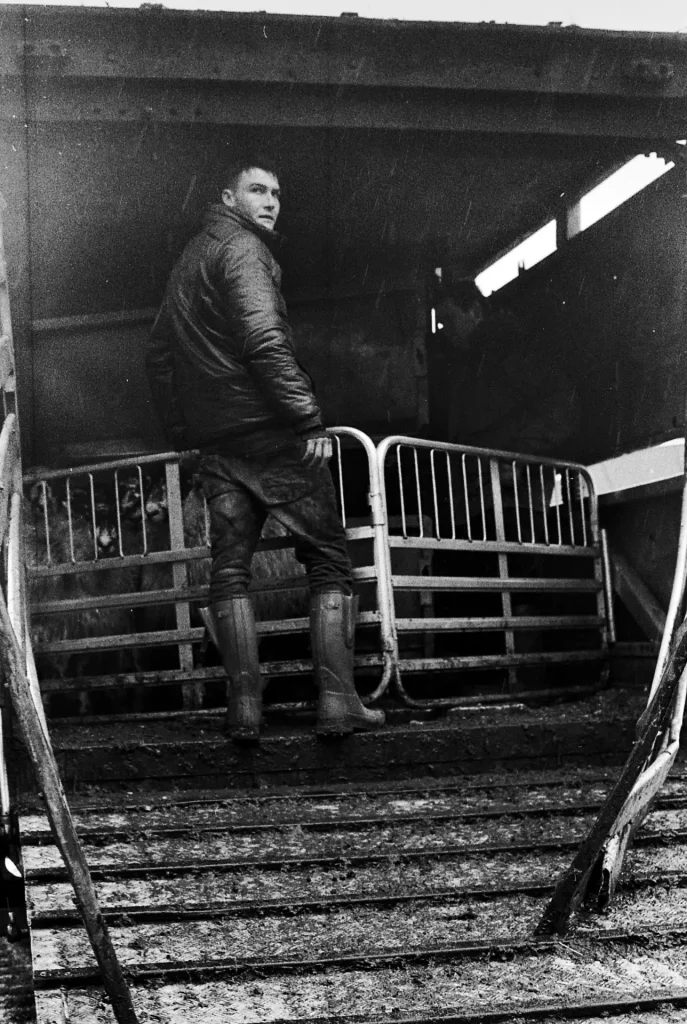
Always show up. If you care, you’re there.
Arrive early so you can get confident in that space and anticipate possibilities.
Access isn’t given straight away. Keep showing up, don’t leave until they leave.
One should have full confidence that their equipment is functioning and necessary, with plenty of film for all eventualities -my preference is Ilford HP5+ (often pushed). Documenting the farmers regularly involves fast action with overcast lighting so I remain at 800 or 1600. If the sun comes out then I stop-down and play more with layers.
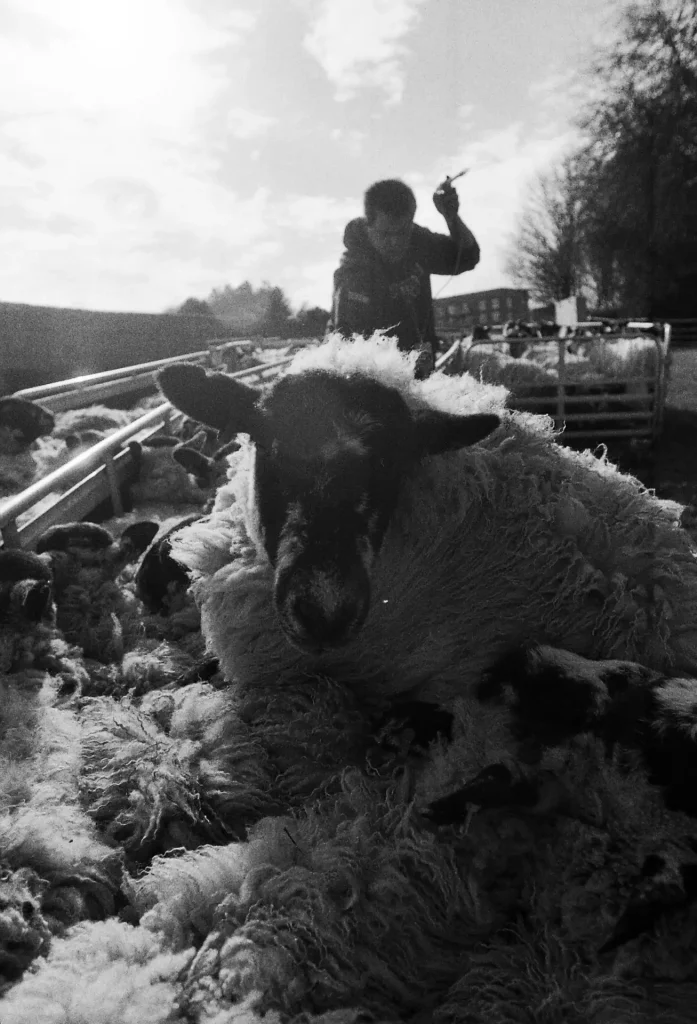
Empathy. They are human beings and their work is hard. Avoid being of any hindrance. I try to help out when possible and prioritise participation during quieter moments. Oftentimes lending a hand is more useful than any photograph could be. One primary question to consider is how would I want to be visually represented? I place emphasis on their personal & professional aspects which I come to understand as more time is spent with them.
I am searching for what has already been achieved in similar projects, and how I can learn and expand from that. Classic documentary work and images from the Milton Keynes archive inspires a great deal.
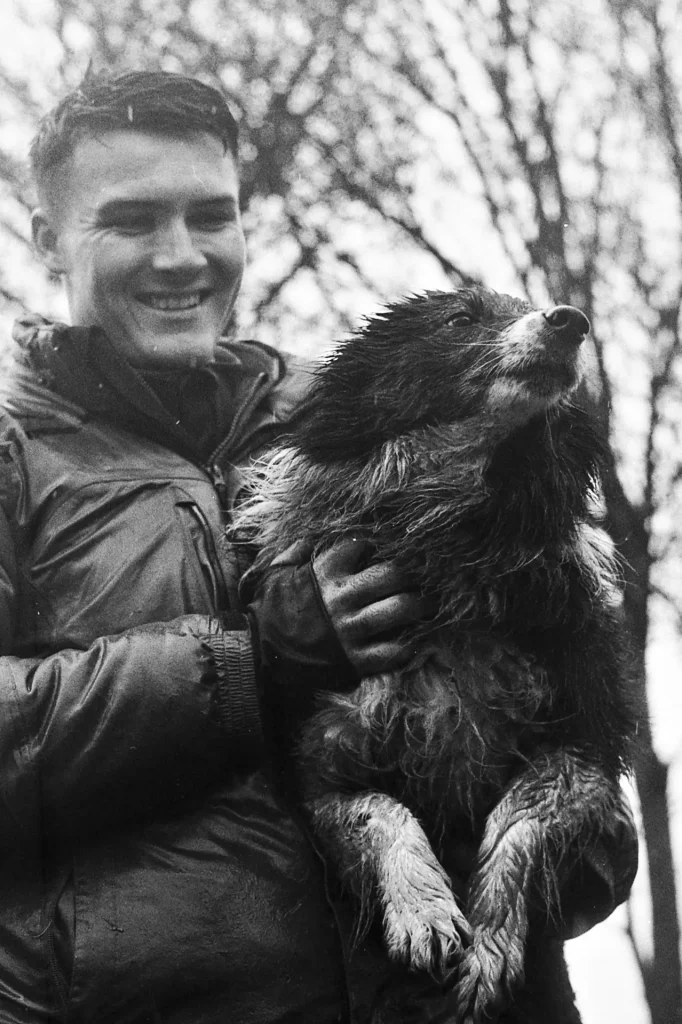
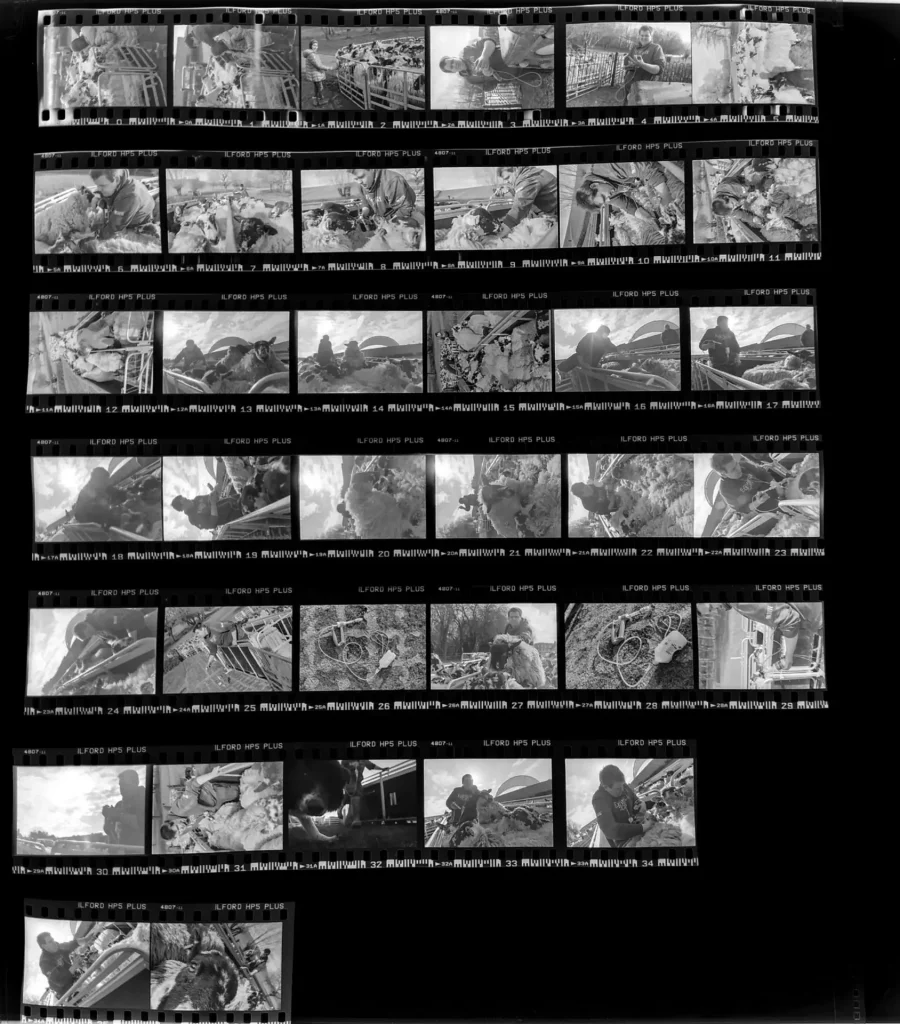
Thanks for reading, you can follow and see more of the young farmers at A.R Stacey & Son.
See more hyperlocal documentary and stay up to date with NewExitGroup on Instagram or NewExitGroup.com
You can find our debut zine, BARDO, which documents the turbulent summer of 2020 here: http://www.newexitgroup.com/print At time of writing signed copies are almost sold out, so act fast!
Share this post:
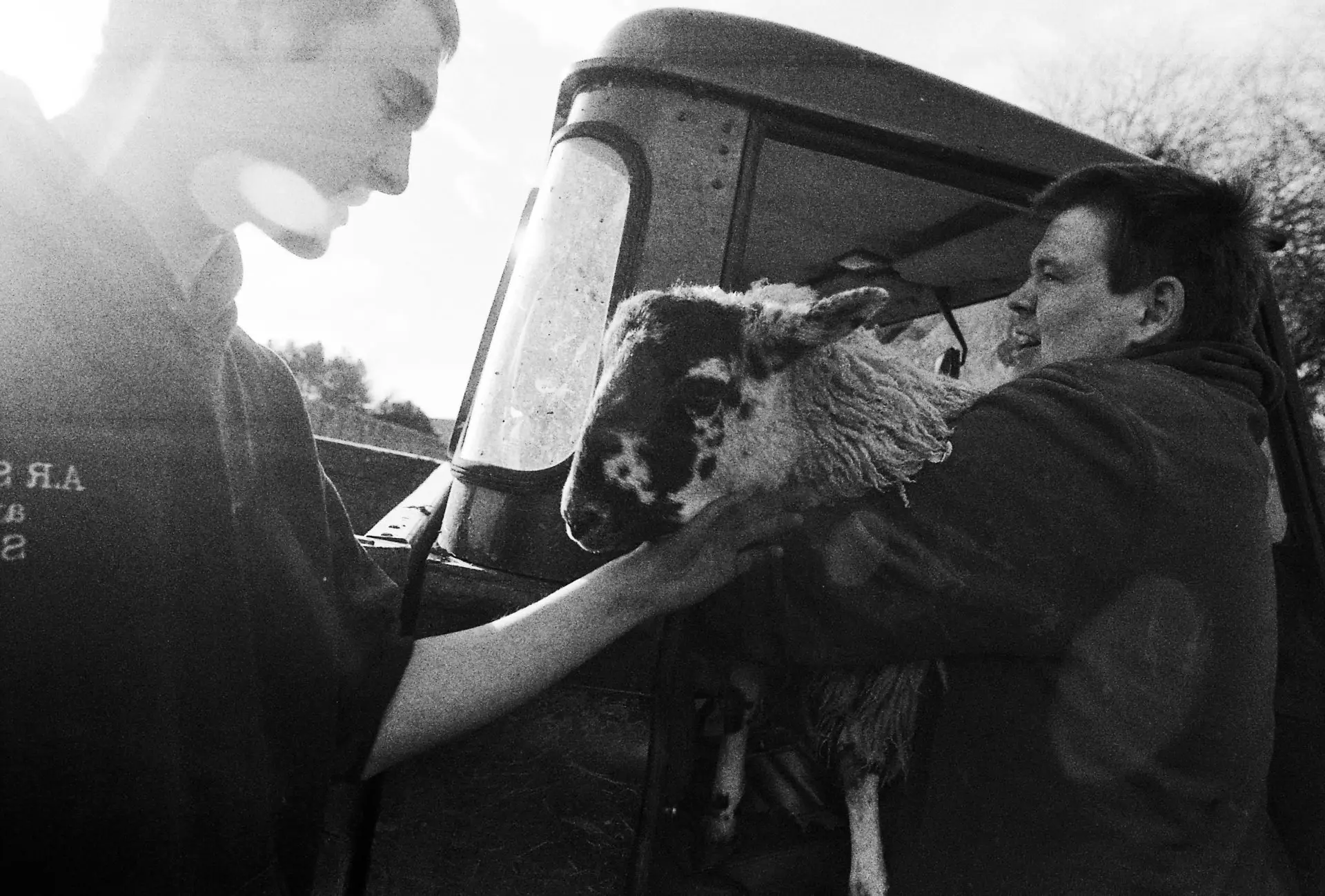








Comments
Floyd Takeuchi on The Young Farmers of Milton Keynes – By Sagar Kharecha
Comment posted: 12/04/2021
Sagar Kharecha on The Young Farmers of Milton Keynes – By Sagar Kharecha
Comment posted: 12/04/2021
Peter Roberts on The Young Farmers of Milton Keynes – By Sagar Kharecha
Comment posted: 12/04/2021
Floyd beat me to it. This is documentary photography at its best. Your treatment of the subject is masterful.
I have nothing for admiration for those guys and, indeed, for you for your wonderful sympathetic images.
Comment posted: 12/04/2021
Yant Martin-Keyte on The Young Farmers of Milton Keynes – By Sagar Kharecha
Comment posted: 12/04/2021
Shot 32 on the contract sheet makes me smile as well.
Sagar Kharecha on The Young Farmers of Milton Keynes – By Sagar Kharecha
Comment posted: 12/04/2021
Thank you for looking through the contact sheet. Frame 32 was a cheeky moment haha!
Andrew Lossing on The Young Farmers of Milton Keynes – By Sagar Kharecha
Comment posted: 13/04/2021
Comment posted: 13/04/2021
Charles Higham on The Young Farmers of Milton Keynes – By Sagar Kharecha
Comment posted: 14/04/2021
Comment posted: 14/04/2021
Daniel Castelli on The Young Farmers of Milton Keynes – By Sagar Kharecha
Comment posted: 15/04/2021
A well written article and accompanying photos. I took away three things that anyone engaged in working on in-depth projects should equip themselves with:
1. A working knowledge of your equipment so you can make your photos with confidence. You know what your equipment can do.
2. An empathy for your subject. Robert Capa said something about "LIking people and let them know it." (I may be messing up the exact working of his quote...)
3.You treat your subjects and their circumstances with respect. You don't judge or take a moral "high ground" stand.
People should copy your article and carry it with them as a master class.
Dan Castelli
Comment posted: 15/04/2021
Jez Hastings on The Young Farmers of Milton Keynes – By Sagar Kharecha
Comment posted: 16/04/2021
Jez
Pablo on The Young Farmers of Milton Keynes – By Sagar Kharecha
Comment posted: 16/04/2021
Layer Elements with Longer Lenses in Street Photography - Ravi Prabhat on The Young Farmers of Milton Keynes – By Sagar Kharecha
Comment posted: 03/05/2021
黒と白は写真の「年齢」を意味する必要がありますか? - Get Japan News on The Young Farmers of Milton Keynes – By Sagar Kharecha
Comment posted: 27/12/2021
Greg Propertywerks on The Young Farmers of Milton Keynes – By Sagar Kharecha
Comment posted: 30/08/2022